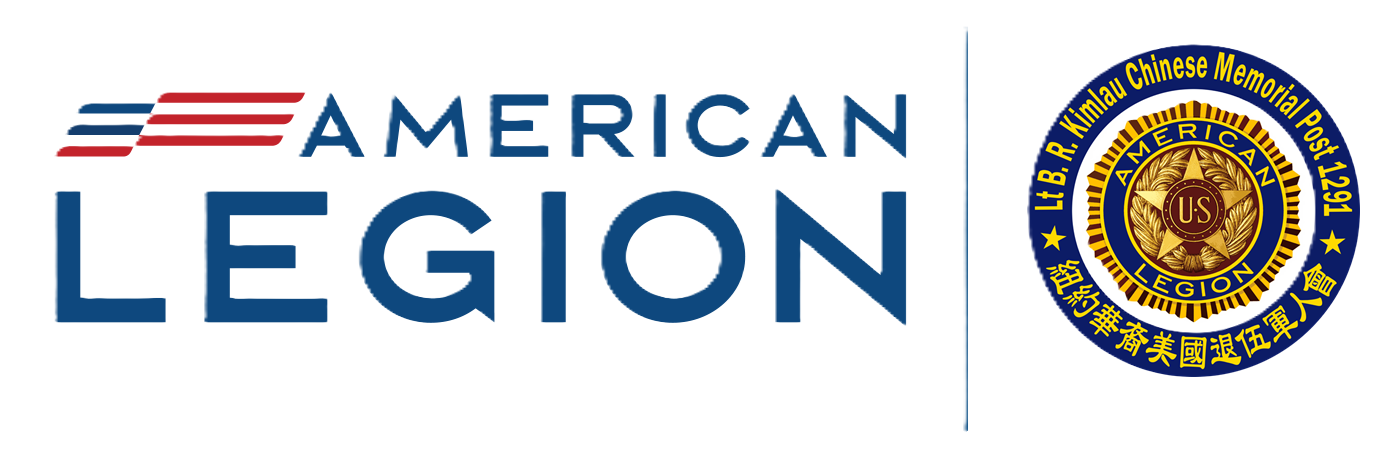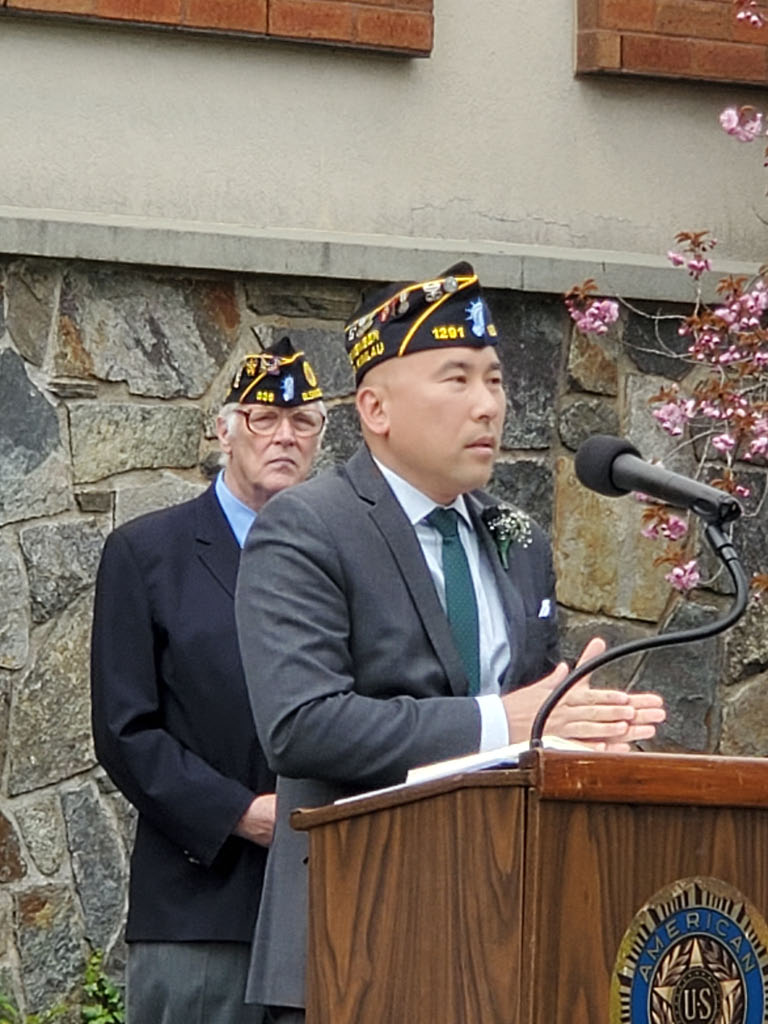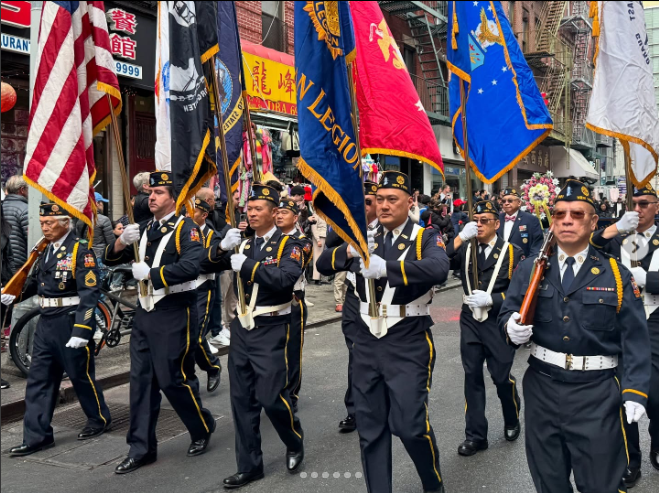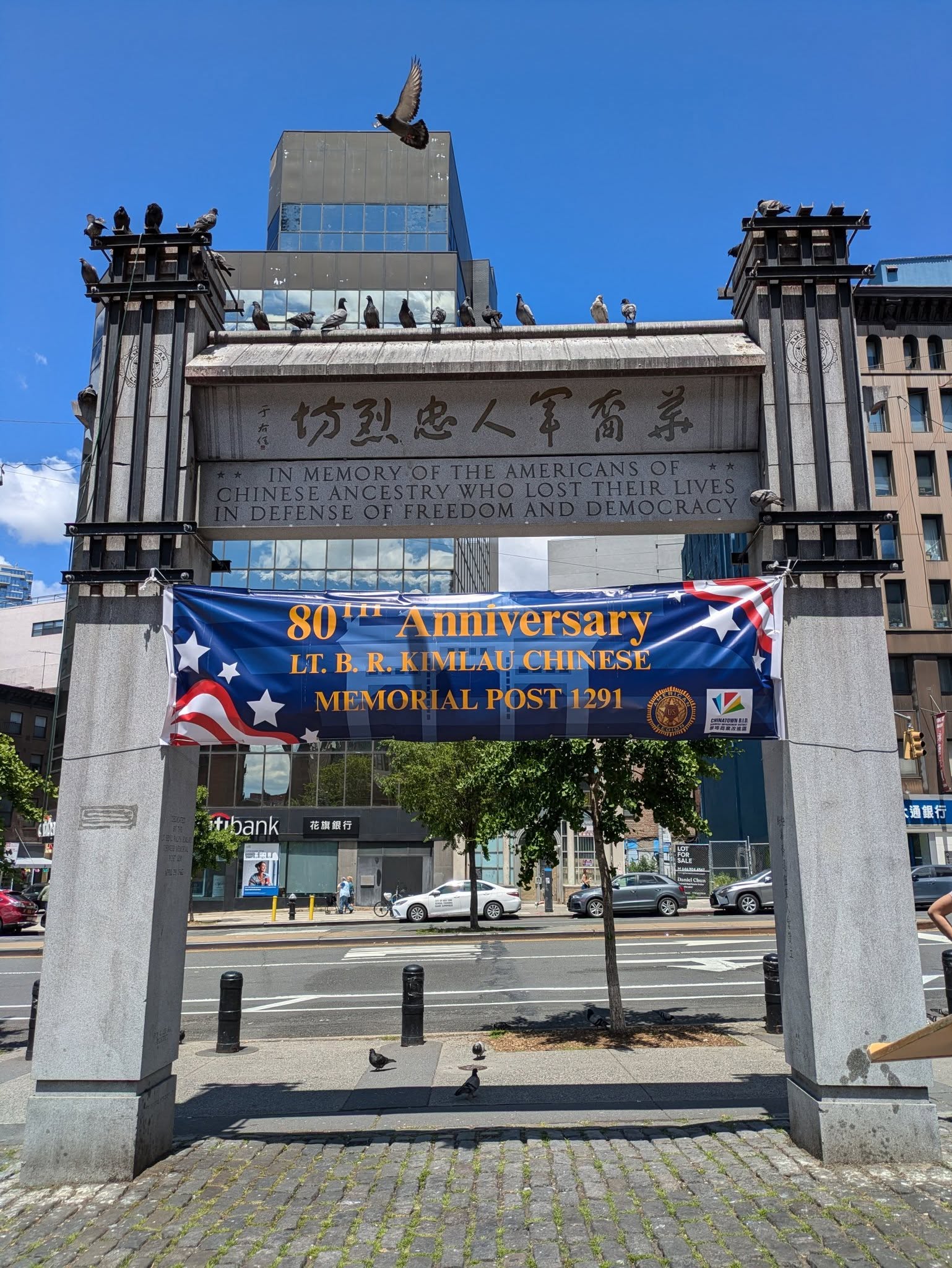Our Namesake: Lt B. R. Kimlau, the Story of His Heroic Supreme Sacrifice
Our friends, guests, and members often wish to hear more about Lt. Benjamin Ralph Kimlau, whom our Post is named after. This is a brief story of our World War II hero.
Ralph Kimlau was born on April 10, 1918 in Concord, Massachusetts. At age fourteen, Ralph moved with his parents to New York City where he attended DeWitt Clinton High School. Upon graduation in 1937, the young man visited China for the first time.
During that trip, Ralph Kimlau personally witnessed the Japanese aggression in East Asia. Little did he realize then, that this conflagration would develop into a global conflict, and that he would take part in this war and honorably perish in the defense of peace and justice.
Ralph returned to the United States in 1938 and attended Pennsylvania Military College where he graduated with high honors in 1942. He was then commissioned as a Second Lieutenant in the Field Artillery.
He later applied for and was granted a transfer to the U.S. Army Air Forces. After completion of his pilot training, Ralph was assigned to the 380th Bombardment Group of the Fifth Air Force located in Fenton, Australia. The group was known as the “Flying Circus” and had sustained considerable casualties in its support of General MacArthur’s advances in Bismarck Bay.
Operations in this area were of great importance at that particular time because it marked the first offensive from General MacArthur’s troops after their retreat from the Philippines. The control of Bismarck Bay would trap thousands of enemy soldiers and cut off the Japanese supply lines to New Guinea and near-by islands, thus, setting the stage for the return of American forces to the Philippines.
On February 27, 1944, a teletype called for twenty-four Liberators with crews and ground personnel to transit to Port Moresby, New Guinea with orders to bombard Hollandia day and night. Lt. Ralph Kimlau was one of the pilots selected for this mission.
However, bad weather caused the planes to be rerouted to Nadzab while the ground personnel remained at Port Moresby. As a remote outpost to the Fifth Air Force, Nadzab was a small airdrome located on the North Shore of New Guinea and had a compliment of a few fighter planes. The base was poorly situated in the Markham Valley of New Guinea and was under-manned and ill-equipped. Each night take-off or landing was a sweat job for the pilots because it required intricate and precise patterns to be flown on instruments to avoid crashing into the surrounding hills.
The pilots’ first mission was to bombard all Japanese airdromes and aircrafts around New Guinea to cover the landing of the First Cavalry Division on Los Negros Island in the Admiralties. For four days, the men relentlessly pounded Hansa, Nubia, Hollandia, Wetek, and other key points in this area.
On March 5, 1944, the pilots were ordered to attack the Japanese rear line at Los Negros Island even though they were in no shape to take on the mission. The crews were exhausted from being in constant action, and their planes were in desperately needed of service. However, the First Cavalry Division was already ashore on Los Negros Island and had been suffering from waves of Japanese attacks. This necessitated the bombing mission to be urgently launched to provide air support.
On this mission, Lt. Benjamin Ralph Kimlau and his entire crew met their heroic end. The 380th Bombardment Group, through great courage, skill and devotion to duty, was awarded two Presidential Unit Citations for their outstanding performance and gallantry in battle.
Click on link to download PDF file
Our Namesake – Lt. B. R. Kimlau






